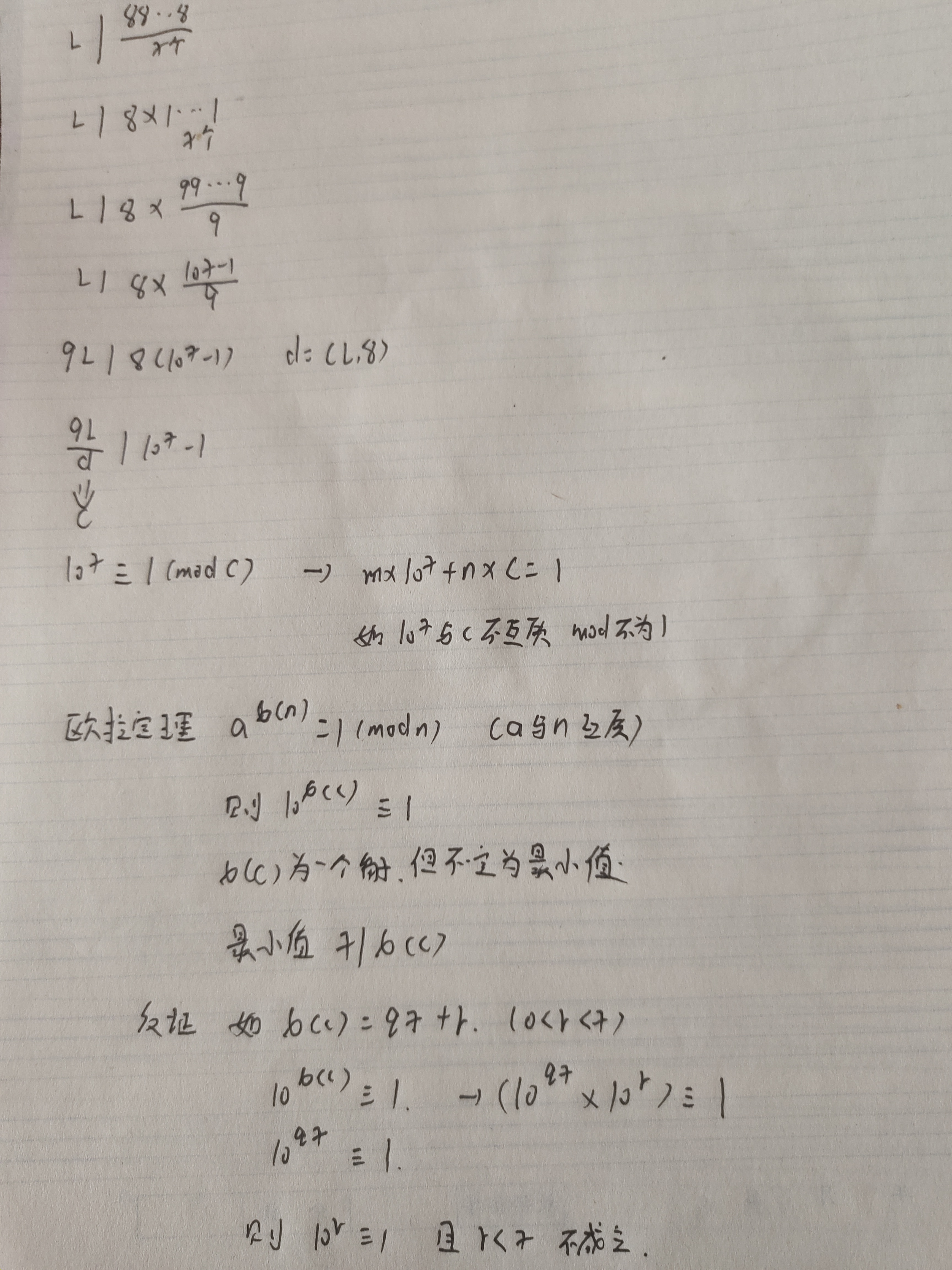8是中国的幸运数字,如果一个数字的每一位都由8构成则该数字被称作是幸运数字。
现在给定一个正整数L,请问至少多少个8连在一起组成的正整数(即最小幸运数字)是L的倍数。
输入格式
输入包含多组测试用例。
每组测试用例占一行,包含一个整数L。
当输入用例L=0时,表示输入终止,该用例无需处理。
输出格式
每组测试用例输出结果占一行。
结果为“Case 1: ”+一个整数N,N代表满足条件的最小幸运数字的位数。
如果满足条件的幸运数字不存在,则N=0。
数据范围
1≤L≤2∗109
输入样例:
8
11
16
0
输出样例:
Case 1: 1
Case 2: 2
Case 3: 0

#include<bits/stdc++.h>
using namespace std;
typedef long long ll;
ll qmul(ll a,ll k,ll b)
{
ll res=0;
while(k)
{
if(k&1)res=(res+a)%b;
a=(a+a)%b;
k>>=1;
}
return res;
}
ll qmi(ll a,ll k,ll b)
{
ll res=1;
while(k)
{
if(k&1)res=qmul(res,a,b); //因为C为10^10两个数相乘会爆long long
a=qmul(a,a,b);
k>>=1;
}
return res;
}
ll get_euler(ll c)
{
ll res=c;
for(ll i=2;i<=c/i;i++)
if(c%i==0)
{
while(c%i==0)c/=i;
res=res/i*(i-1);
}
if(c>1)res=res/c*(c-1);
return res;
}
int main()
{
ll t=1;
ll l;
while(cin>>l,l)
{
ll d=1;
while(l%(d*2)==0&&d*2<=8)d*=2;
ll c=9*l/d;
ll phi=get_euler(c); //互质的数的个数;
ll res=1e18;
if(c%2==0||c%5==0)res=0; //不互质则不存在;
else
{
for(ll d=1;d<=phi/d;d++)
{
if(phi%d==0)
{
if(qmi(10,d,c)==1)res=min(res,d);
if(qmi(10,phi/d,c)==1)res=min(res,phi/d);
}
}
}
printf("Case %d: %lld\n", t ++, res);
}
}

